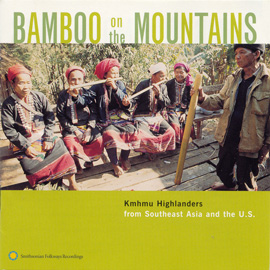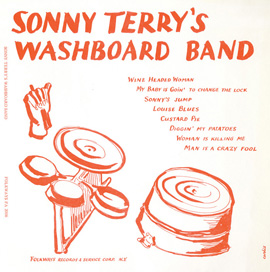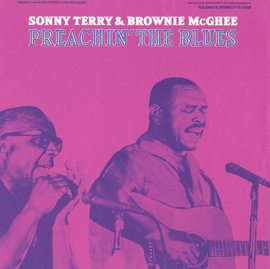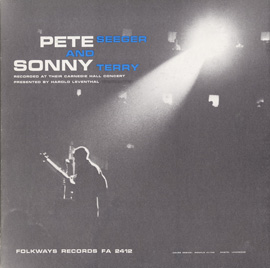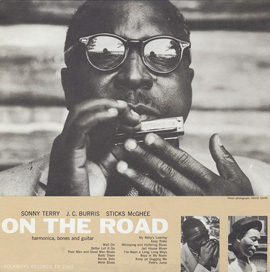Summary
The Jew’s harp is played in many cultures around the world. Students learn about the different roles of a Jew’s Harp from dance music to musical speech. Students also learn about the history, styles, and origin of this interesting instrument.
Suggested Grade Levels: 3-5, 6-8
Country: United States, Ireland, Tuva, Papua New Guinea
Region: English, Irish, Asian
Culture Group: English, Irish, Asian
Genre: World
Instruments: Jew’s Harp
Language: English
Co-Curricular Areas: Geography, History
National Standards: 2, 3, 6, 8, 9
Prerequisites: None
Objectives:
- Identify the Jew’s harp
- Listen to examples of the metal and bamboo Jew’s harp
- Compare the sound of different types of Jew’s harps
- Listen to an example of imitating nature using the Jew’s Harp
- Create an imitation of nature using instruments or body percussion
- Dance to the music of the Jew’s harp
- Identify the location and environment of Tuva
- Listen to speech through the Jew’s harp
- Have a musical conversation with someone
- Transfer the patterns of speech into rhythm
Material:
- “Shortnin’ Bread” by Sonny Terry, The Folkways Years, 1944-1963, Track #111
- “Gaima play the bamboo Jew’s harp” by Gaima
Bosavi: Rainforest Music from Papua New Guinea, Track #209 - “On the Road to the Fair” by the Flanagan Brothers, Irish Popular Dances, Track #105
- “Xomuz Imitating Water” and “Talking Xomuz” by Anatoli Kuular, Tuva, Among the Spirits: Sound, Music, and Nature in Sakha and Tuva, Track #108, #117”
- “Ta’ Manh Ruamchit, hroong bamboo Jew’s harp” by Ban Pa’ Teung, Bamboo on the Mountains: Kmhmu Highlanders from Southeast Asia and the United States, Track # 125
- “Map of Tuva” liner notes from TUVA Voices from the Center of Asia (SFW40456), p. 2
- Images of bamboo and metal Jew’s harps
- Various percussion instruments, soprano recorder (optional)
- Jew’s harp (optional)
Lesson Segments:
- The Jew’s Harp Description and Examples (National Standards 6, 8, 9)
- The Jew’s Harp in Tuva (National Standards 2, 3, 6, 9)
- Communication Through the Jew’s Harp in Tuva and Thailand (National Standards 2, 3, 6, 9)
1. The Jew’s Harp Description and Examples
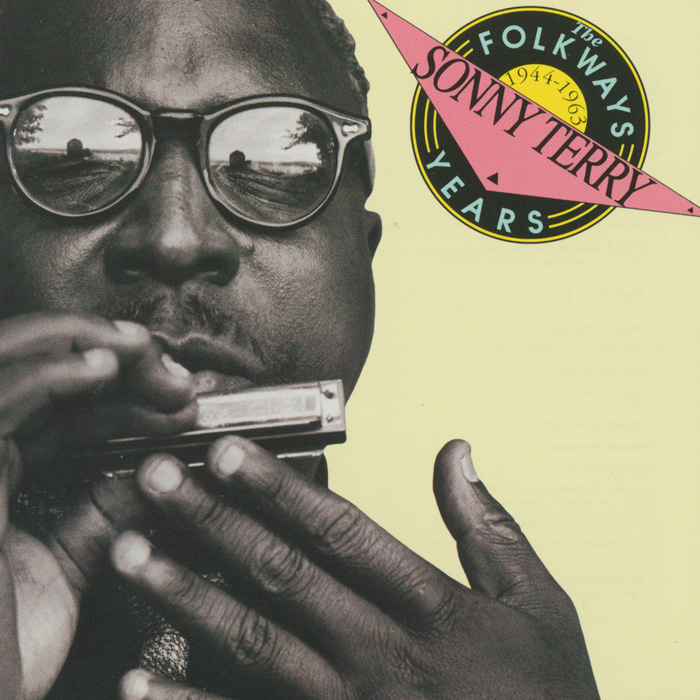
“Shortnin' Bread”
from The Folkways Years, 1944-1963 (1991) | SFW40033
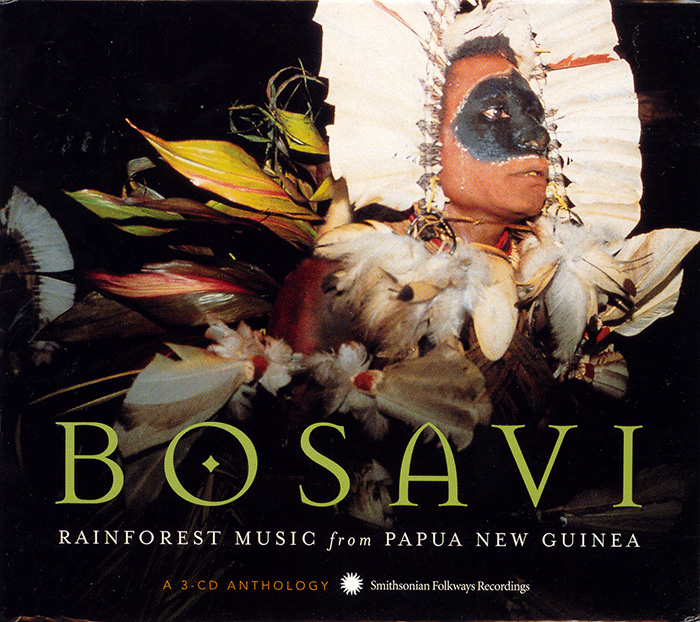
“Gaima plays the bamboo jew's harp”
from Bosavi: Rainforest Music from Papua New Guinea (2001) | SFW40487
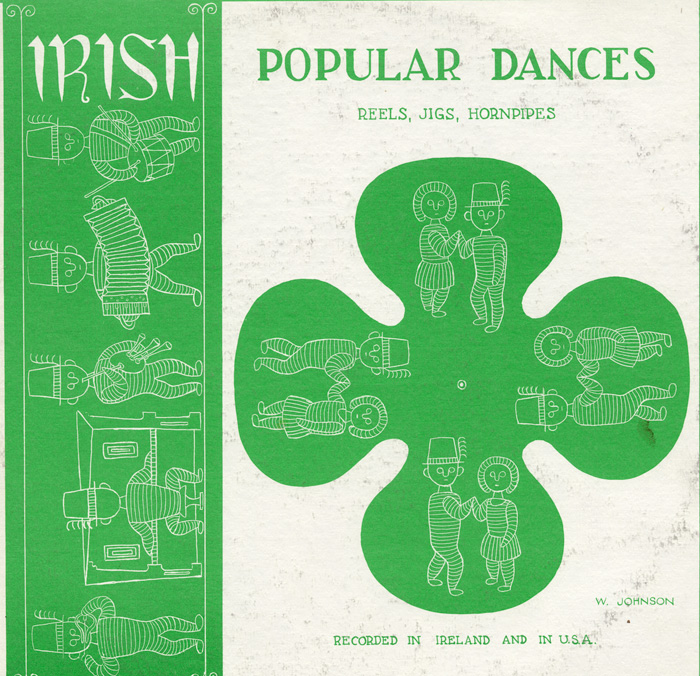
“On the Road to the Fair”
from Irish Popular Dances (1951) | FW06818
- The Jew’s harp is a small instrument made of wood (bamboo) or metal.
- The metal variety has a frame shaped like a horseshoe with extended parallel ends
- Between these ends is a thin piece of metal called the tongue that vibrates when the end (trigger) is struck
- Show students examples of metal and bamboo Jew’s harps which can be found freely available online.

- The instrument is played by placing the parallel ends of the metal loosely between the front teeth while vibrating the metal tongue with a finger.
- The wooden variety has a piece of thin wood, or lamella, attached to a cord that is pulled by the player to create the vibration
- Jew’s harps can only play one base pitch that the player can alter by changing the shape of his or her mouth
- Jew’s harps have been around since the Middle Ages.
- The origin of the name “Jew’s harp” is not known; some scholars have explained the name as a mistaken translation of “jaw” harp or “juice” harp
- There is no indication that the origin of the Jew’s harp was connected with Judaism or the Jewish people
- In England and Scotland, the instrument is called a “Trump” or a “Jew’s Trump”
- There are hundreds of names worldwide for the Jew’s harp and many of them translate to “mouth harp” in English
- The Italian name, “Scacciapensieri” means “drives away thoughts” or “pastime”; this translation gives an indication of how the instrument is used in parts of the world
- It is also used for communication, spiritual ceremonies and connection with nature
- 4. This small but unique instrument is used to make many different types of music around the world
- Listen to the example of Sonny Terry, an African-American from the United States, playing “Shortnin’ Bread” on a metal Jew’s harp.
- Now listen to Gaima playing a bamboo Jew’s harp, or uluna, as it is called in the rainforest of Papua New Guinea where he lives.
- Gaima’s songs often imitate the sound of an insect or bird he has heard
- Children in Papua New Guinea make a sound similar to the Jew’s harp by attaching a live sago beetle to a small piece of bamboo
- The beetle hangs in front of the mouth while the player makes vocal sounds to its buzzing wing beats
- Compare the sound of the metal and bamboo Jew’s harp.
- Discuss the difference in the style of the example from the United States and the one from Papua New Guinea
- h. The music of the Jew’s harp is danced to in many cultures.
- Often, dancers would need to dance without shoes so their feet did not make more sound than the Jew’s harp
- Listen to the Irish recording “On the Road to the Fair” of a hornpipe played on a Jew’s harp and a guitar.
- A hornpipe is a lively dance that includes hops, stomps, and imitations of sailors’ movements – pulling ropes, looking out to sea and climbing the rigging
- Try taking off your shoes and dancing a hornpipe while you listen to “On the Road to the Fair”
Assessment:
What words did you use to describe the sound of the metal Jew’s harp and the bamboo Jew’s harp? How would you describe the style of Gaima’s music compared to “Shortnin’ Bread”? What sailor movements did you add to your hornpipe dance?
2. The Jew's Harp in Tuva
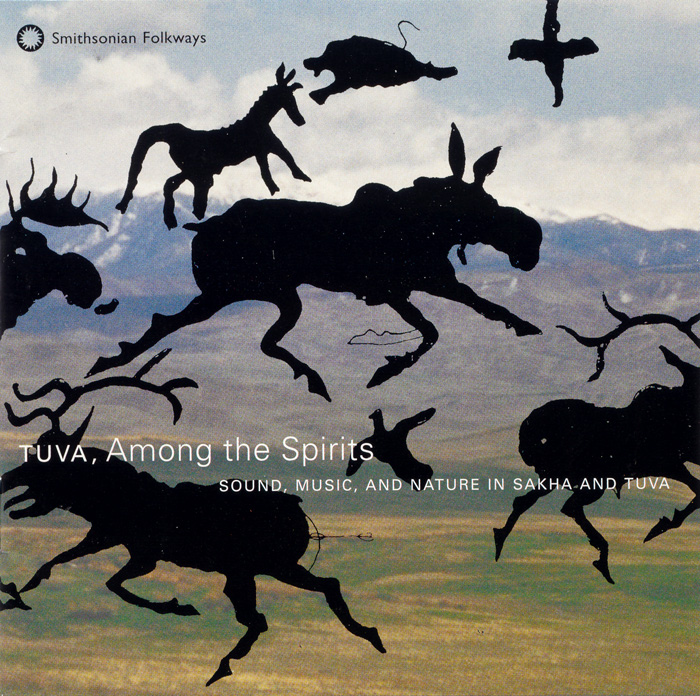
“Xomuz (Jew's Harp) Imitating Water”
from Tuva, Among the Spirits: Sound, Music, and Nature in Sakha and Tuva (1998) | SFW40452
“Talking Xomuz”

“Hroong jew's harp”
from Bamboo on the Mountains: Kmhmu Highlanders from Southeast Asia and the United States (1999) | SFW40456
- Tuva is a small region northwest of Mongolia in Asia.
- Show “Map of Tuva” liner notes from TUVA Voices from the Center of Asia (SFW40017), p. 2
- Tuva is mostly rural and herding is still a primary occupation.
- Tuvan’s live on steppes, which are grassy treeless plains
- The climate is very severe with temperatures reaching over 100° in some areas in summer and -30° or lower in the winter
- Traditionally, many Tuvan’s were nomads and travelled with their herds
- Many Tuvan people live in yurts, which are cloth covered wooden frames
- Living with nature and its sounds is expressed by Tuvans through their music
- The Jew’s harp, or Xomuz, as it is known in Tuva is often used to imitate sounds from nature

- Listen to an example from Tuva, Among the Spirits of the Xomuz imitating the sounds of flowing and dripping water.
- Use an instrument or body percussion or your voice to imitate something from nature
- Students can work in groups to create the sound of a rainstorm
- Try using a soprano recorder to imitate the call of a bird that you know
Assessment:
How were you able to imitate sounds from nature? What method and sound did you choose?
3. Communication Through the Jew's Harp in Tuva and Thailand
- The Xomuz is also used by the Tuvans as an expression of human speech.
- Often secret messages were sent using the Xomuz or Jew’s harp to those who could figure out the meaning of the words as they are played through the instrument
- Listen to “Talking Xomuz,” a song that is sung and then played on the Jew’s harp.
Translation:
On my soft-voices xomuz
I play for the multitudes
Among them sits a girl
Who pretends not to notice me. - In Thailand, a Jew’s harp, or hroong, made of brass or bamboo, was used in courtship.
- If a young man was visiting his girlfriend in the evening and her whole family was there, he could use the quiet sounds of the Jew’s harp to speak to her in a disguised way
- The tongue of the Jew’s harp can be tapped to match the syllables of the words that someone may want to communicate to another
- The mouth can make the shape of words and disguise them with the vibration of the tongue
- Listen to “Ta’ Manh Ruamchit, hroong bamboo Jew’s harp”, a song of courtship.
- Have a musical conversation with someone.
- Try playing with your back to your partner so you can’t see each other
- Use any kind of percussion instrument, recorders, body percussion or your voice singing nonsense syllables on one pitch
- Try converting a sentence or poem into rhythm
- Play the syllables of the words adding accents for the strong syllables and playing lightly for the weak syllables
Assessment:
How did you know when it was your turn to give a response in your musical conversation? What instrument did you choose and why?
Extentions:
- Watch a video of a Jew’s harp performances: Temir Komuz (Iron jew’s harp) Performance by a woman from Kyrgyzstan freely available on video sites online.
- Learn to play the Jew’s harp!
Additional Resources:
Grove’s Dictionary of Music and Musicians, Ed. By Eric Blom
Volume IV H-K, St. Martin’s Press, New York, 1960, fifth edition, pp. 636-637






